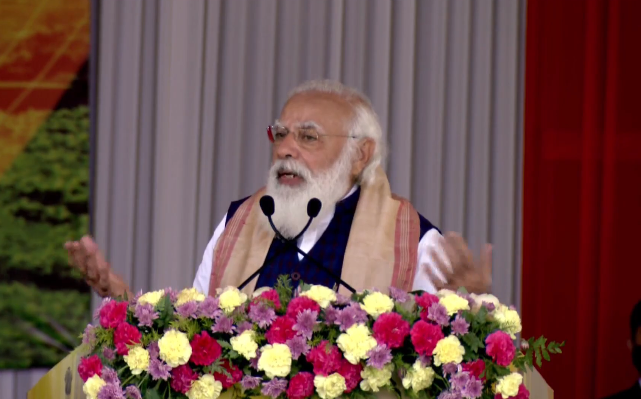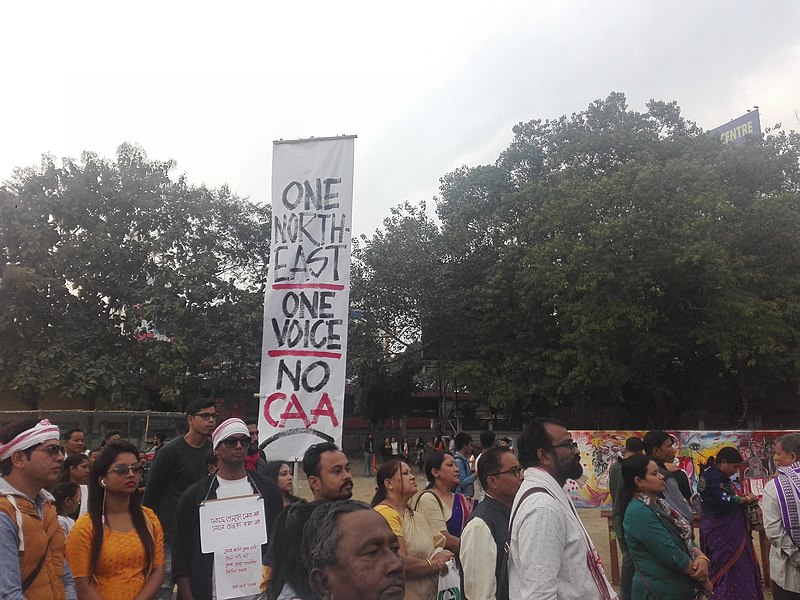
Upcoming Assam Elections – From Rhetoric To Reason
The Covid-19 pandemic has turned the world upside down, but one must not lose sight of the hard facts, unfulfilled promises at this crucial juncture.
Team TNE
The pentennial ‘festival of democracy’ is around the corner, and Assam, which is always in a festive mood, is gearing up to celebrate it with full gusto. All political parties – big and small — are on a campaign mode; even Prime Minister Narendra Modi and home minister Amit Shah flew in and out, attending mega events in the state, ensuring Assam remains in the national limelight at least for the next couple of months. There are reports that Modi would arrive in the state in the first week of February as well.
The chances are pretty high that the festival of democracy would coincide with Assam’s spring festival – the Rongali Bihu. Hence, one may be left wondering if the state will vote with a ‘eat, drink and be merry’ mood, blissfully forgetting the burning issues such as NRC,CAA, Clause 6, Dehing Patkai, Baghjan, flood and erosion, so on and so forth.
The Covid-19 pandemic cannot be an excuse to sidestep these issues. Yes, the pandemic has turned the world upside down, and everybody has to adapt to the new scheme of things – in professional and personal life. However, one must not lose sight of the hard facts, unfulfilled promises at this crucial juncture.
The upcoming Assam assembly polls will be the first major election since the state witnessed two major developments – the so-called final list of the National Register of Citizens published on August 31, 2019 and the massive protests against the Citizenship Amendment Act (CAA) that erupted in different phases.

The NRC, in the current form, is far from satisfactory. Even the ruling Bharatiya Janata Party (BJP), which had made it an inalienable part of its campaign in previous elections, has indicated its reluctance to accept the register. Adding to the NRC woes is the affidavit filed in the Gauhati High Court, in which the state NRC coordinator Hitesh Dev Sarma has accused the Registrar General of India of keeping mum over the lapses in the final list.
Coming to CAA, the country’s top court has refused to stay the legislation without hearing the government’s version. CAA grants Indian citizenship to religious minorities such as Hindus, Sikhs, Buddhists, Christians from Bangladesh, Pakistan and Afghanistan who entered India on or before December 31, 2014. As many as 80 petitions were filed against the controversial legislation. The pleas could eventually be referred to a Constitution bench.
CAA – From Agitation to Election
Except the BJP and its allies, all political parties in Assam have equivocally denounced CAA. A bunch of political outfits sprouted in the past six months primarily from the anti-CAA camp. But the real question is – how many of them would live up to people’s expectations?
Needless to say, CAA poses a grave threat to Assam as it would encourage more immigration – of Hindu Bangladeshis – to this frontier state already bursting at the seams. Also, CAA defeats the very purpose of the NRC update exercise. Nobody seems to be sure how these two mechanisms would be reconciled.
There is a reason to believe that a few millions of illegal Hindu migrants are already living in various states, including Assam. And it’s likely that many had crossed the border much before Parliament passed the citizenship law.
According to Abul Barkat, a professor of economics at Dhaka University, nearly 11.3 million Hindus left Bangladesh between 1964 and 2013 owing to religious persecution and discrimination. This means on an average 632 Hindus left the country each day and 2,30,612 annually, he said, ringing an alarm that no Hindus would be left in Bangladesh three decades from now if the current exodus continues.
While Hindus were forced to migrate owing to religious persecution, the immigration of Muslims was linked to economic factors. But many observers believe that the situation has changed now. Bangladesh today boasts of better socio-economic conditions compared to the situation in the country two decades ago.
Bangladesh has registered progress in several social indicators, including education, sanitation and health over the years. In 2018, its GDP growth was 7.9 percent compared to India’s 6.8 percent and 2.9 percent for the United States.
Given these circumstances, the immigration of Bangladeshi Muslims to India could see a decline. On the contrary, Hindus and other minority groups are likely to continue to migrate unless India’s citizenship law is legally defeated.
Now Or Never!
The social media savvy generation which would exercise their franchise in this election comprises mostly millennials born after the turbulent period of the 1980s. They may have missed 1985, the year the Assam Accord was signed, but they have whole-heartedly taken part in the anti-CAA protests. They have seen the devastation caused by flood and erosion, the wanton destruction of forests, the plunder of natural resources, ecological damage caused by the Baghjan fire, the Dehing-Patkai episode among others.
They shared images and posted comments on these issues. Their comments and concerns reflect their maturity of thought and grasp over contemporary issues – but would they show the same maturity while exercising their democratic rights?
